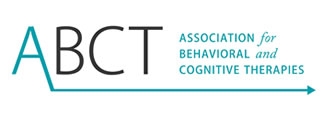
The new school year is about to start! The new school year can bring up feelings of excitement and nervousness for your child. New schedules, new teachers, new friends, and new schools can feel overwhelming to children. Helping to prepare them for their new schedule and routine can help with a smooth and successful start to the year.
The following tips can help your child feel confident and prepared when returning to school.
Tip #1: Start Routines During the Summer
Helping children get back to or begin a school routine can help with the change from a summer schedule. This can include the following:
- Wake your child up around the same time as they would for school and get ready for the day.
- Pick out clothes the night before for the next day.
- Include learning activities throughout the day using games or songs.
- Add in mealtimes and snack times similar to a school day.
- Begin a nighttime and bedtime routine around the same time as they would for school.
Many children benefit from using a visual schedule to help them know what is expected of them. Giving choices throughout this routine (e.g., do you want to wear your blue shirt or green shirt tomorrow?) can help children feel more in charge.
Example: https://www.teacherspayteachers.com/Product/Visual-Schedule-Getting-Ready-for-School-9689706
Tip #2: Tour the School
Before school begins, if possible, meet your child’s teachers and key staff and find important places like the bathrooms, new classroom, counselor’s office, and nurse’s office. This can help reduce your child’s (and your) uncertainty by becoming familiar with the new environment! This can include:
- Showing your child safe spaces, such as the counselor’s office or a sensory room.
- Talking to the nurse about medication management.
- Meeting the teacher and other important members of your child’s team.
- Identifying people who can help in different situations.
- Demonstrating expectations, such as stopping at the front doors or how to hold a lunch tray.
- Ensuring IEP or 504 plan is up to date with your child’s current strengths and vulnerabilities.
Schools often host open houses and back-to-school parties. It may also be helpful to include a private tour of the school before the school year starts.
Tip #3: Create a Social Story
Talking about and showing your child their new school routine can be helpful to know what to expect! You can create a social story to talk about the fun, new, and challenging parts about the school day. Some examples are:
- When I walk into the classroom, I say hello to my teacher and put my backpack in my spot.
- When I go to lunch, I get a tray and choose what I want.
- When it’s time for reading, I get my book out of my backpack.
- If I don’t understand what the teacher is saying, I can ask them to help me.
- My speech therapist will come after lunch to take me to a different classroom.
You can also demonstrate and practice behavioral expectations, such as:
- When I have a question, I raise my hand.
- When I need to use the restroom, I use my picture board.
- When my head hurts, I tell my teacher and go see the nurse.
- When I want to play with a friend, I ask them “do you want to play?”
- If I feel overwhelmed, I ask to go to the sensory room.
If you are able to tour the school, take pictures! Creating your own social story with your child using real pictures of their school can help your child know what to expect.
Example: https://www.teacherspayteachers.com/Product/Going-to-a-New-School-Social-Story-Editable-3132651
Tip #4: Check in with Your Child
Creating space for emotional check-ins can encourage your child to share their feelings about their day. You can build this into your routine, such as when you see your child after school or at dinner time. This can include:
- Use a feelings chart to help your child talk about their emotions.
- Play the Rose, Bud, Thorn game. Help your child to identify something positive about their day (rose), something they are looking forward to (bud), and something they need help with (thorn)
- Role-play difficult conversations. For example, have them apologize if they got in trouble at school.
You can also help your child learn to manage their feelings. Below are some examples:
- Practice deep breathing.
- Identify calming activities for your child, such as coloring or using a sensory box.
- Model good ways to manage the emotions of your day. For example, if you spill a drink, you can say, “Uh-oh. I made a mistake. I can clean it up and make sure I hold it tight next time”.
The new school year can be a time of growth for your child. Preparing for back to school can set a positive tone for the year to help your child feel safe, confident, and supported through this transition. Have a great school year!
Proper Citation for this blog post:
Holbrook, C. B. (August 21, 2025). Back to School! Tips for Preparing for a Successful Start to the School Year https://infoaboutkids.org/blog/back-to-school-tips-for-preparing-for-a-successful-start-to-the-school-year
















